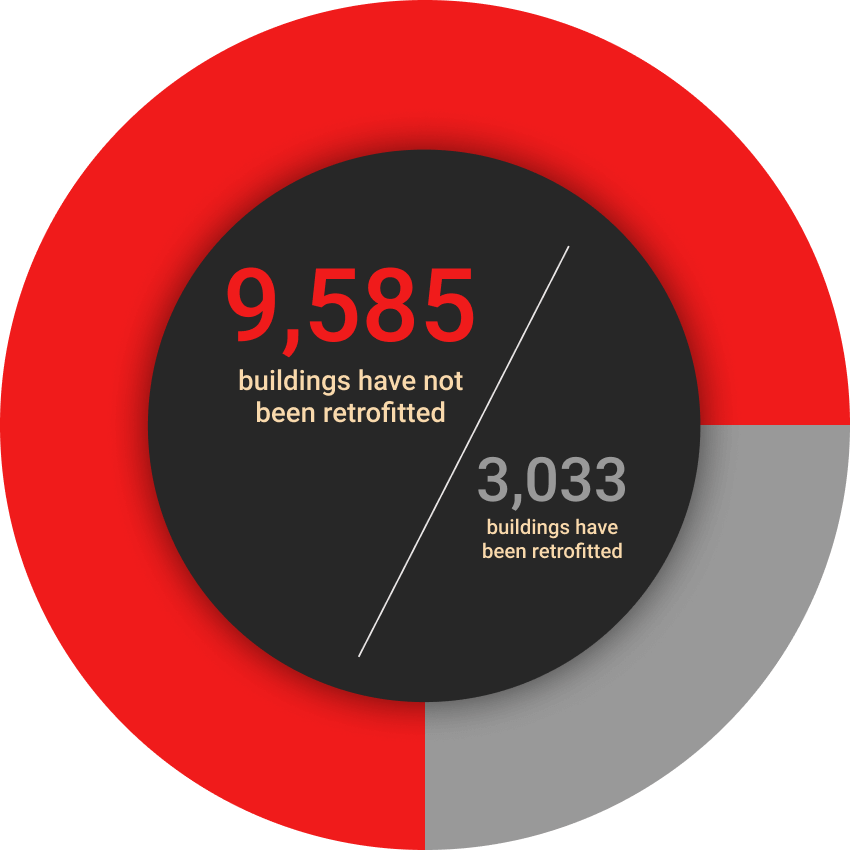- (877) 265-8369, (323) 663-4841
- info@thefoundationworks.com
- Mon - Fri: 9:00 - 5:00
Soft story wood frame buildings can pose a significant risk to residents and the residential building stock in Los Angeles during an earthquake. Most are wood-framed buildings, built before current building codes, whose ground floors have a tendency to collapse when shaken hard enough. Many cities within the Greater Los Angeles area have implemented mandatory soft story retrofit programs to reduce structural deficiencies by the most economical and feasible methods.
Throughout the Greater Los Angeles area, seismic ordinances have been passed by local authorities requiring the evaluation and retrofit of specific building types proven to be vulnerable to seismic events. These ordinances were created in response to poor performance of certain classes of structures during previous earthquakes, such as the 1989 Loma Prieta earthquake and the 1994 Northridge earthquake.
A significant portion of housing lost in the Northridge and Loma Prieta earthquakes was soft story construction.1
These ordinances address critical safety concerns by increasing the likelihood that occupants are able to safely exit the building in the event of an earthquake.
At the time of this writing, these ordinances have been enacted in Los Angeles, Santa Monica, West Hollywood, Beverly Hills, and Pasadena. Beyond these cities, we are in touch with several additional municipalities that will soon be added to this list.

For some Los Angeles communities, soft story buildings comprise a significant percentage of the residential units. This puts residents, primarily renters, at risk. Protecting soft story buildings from collapse through retrofit saves lives and can help prevent community devastation.
With LA’s housing shortage spinning rapidly out of control, a potential loss of thousands of residences in an earthquake would compound this problem. The City of Los Angeles has recognized soft story buildings as a problem and has developed and adopted policies to inventory, assess, and retrofit these buildings.
As of October 1 2019, the City of Los Angeles reports that nearly 75% of soft story buildings have not been retrofitted.3
The Foundation Works is at the forefront of seismic safety developments and is a regional leader in soft story retrofits.
One of the biggest issues raised by requiring residential
retrofit is determining who is responsible for the cost. The City of Berkeley, for example, found that the average soft story retrofit cost was approximately $50,000 per building ($5,000 per unit).1
The expense of a retrofit can place an undue burden on property owners and The City of Los Angeles understands this. Property owners whose buildings are occupied by tenants are allowed to pass some of the retrofit cost to the tenants. This allows property owners more ability to protect the profitability of their building.2
Design professionals and contractors have to be aware of how to interpret and implement retrofit standards and requirements. Some engineers may be fantastic at their craft, and yet not very familiar with the specialized standards used for a soft story retrofit. The same can be said of contractors.
In one instance, differences in how design professionals interpreted engineering standards led to significant inconsistency in the City of Berkeley. Not only was the level of retrofitting inconsistent, but also deciding which buildings met the program’s performance standards was inconsistent, impacting which buildings needed retrofit and which did not.3
The Foundation Works conducted an independent study and found that many property owners were falling victim to over engineered retrofit plans. This often led to property owners receiving bids that were 5 to 6 figures greater than what the retrofit cost could have been.
The goal of the retrofit is simple; to further secure the structure to the ground below. The bulk of the soft story retrofit upgrade is in erecting steel columns that are anchored to a subterranean custom engineered steel/concrete design (grade beam).
Although the use of a steel columns is a relatively recent development in seismic building codes, steel columns have been in use for more than one hundred years. From their inception, engineers have observed that steel columns and frames exhibited superior performance in earthquakes.4
The Foundation Works is proud to offer start to finish soft story retrofits. Our services encompass everything from drafting engineering plans to replacing damaged stucco after the work has been completed.
The Foundation Works is an authority in the foundation repair industry and is responsible for countless soft story retrofits across the Greater Los Angeles Area.
The soft story division of our operation includes our own in-house engineering, construction, and stucco teams that focus exclusively on the needs of our soft story clientele.
To take a soft story retrofit project from start to finish, The Foundation Works oversees all city inspections, provides for onsite tenants, handles administrative needs, and oversees vendor sequencing. All of these necessary pieces and more are factored in to our successful soft story strategy.
The Foundation Works is known throughout the Greater Los Angeles area for our honest, fast, and thorough foundation repairs and improvements.
License # 876769 © 2024 All rights Reserved.